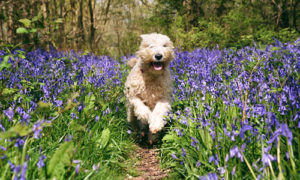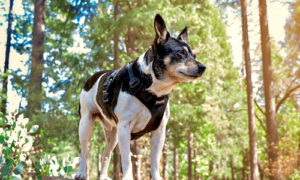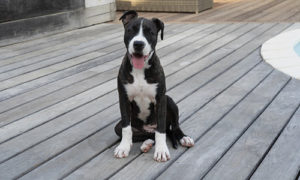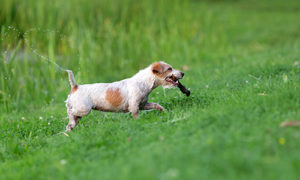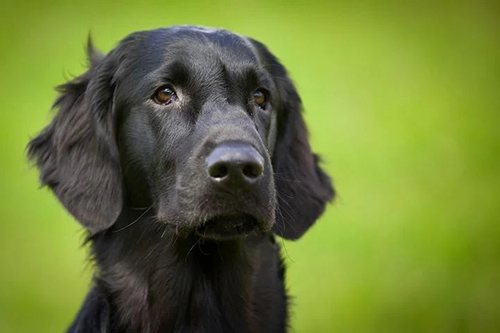
The Flat-Coated Retriever was bred selectively in the 19th century from a mixture of water spaniels, setters, sheepdogs, and Newfoundlands, the same foundation stock as the Labrador Retriever. These dogs became popular as passionate workers with excellent retrieving skills. The various retrievers began to be classified by coat type at early dog shows, and the Flat-Coats were first shown in classes for Wavyand Curly-Coated Retrievers at British dog shows in 1860. The modern Flat-Coated Retriever coat type was stabilized in the following decade, and S.E. Shirley, founder and first president of Britain’s Kennel Club, is primarily credited with this accomplishment. In 1915, the AKC recognized the breed; however, it subsequently became quite rare by the end of World War II. Thankfully, breeders worked tirelessly to revive the Flat-Coat, and by the 1960s, it was once again in demand.
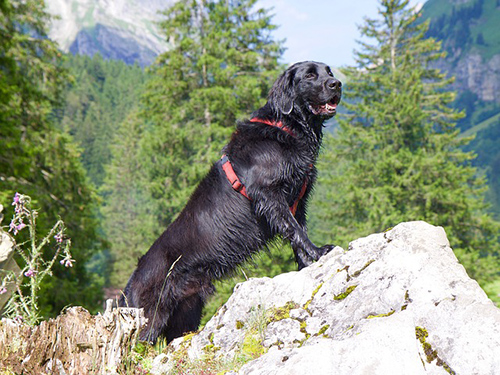
Breed Standard
This breed’s standard is described as “power without lumber and raciness without weediness.” The dogs are practical, versatile, elegant, balanced, free of exaggeration, and athletic. Its proportions are slightly rectangular with moderate bone, a level topline, and a long, straight tail carried somewhat above the back. The muzzle is almost equal to the length of the flat skull. The eyes are almond-shaped and medium-sized, and the small ears lie close to the head. The expression is intelligent and kind.
Flat-Coated Retriever Temperament
This retriever is an excellent family companion with well-developed hunting instincts and a good-natured, adaptable, and friendly disposition. The Flat-Coat demands plenty of individual attention and interaction with its family. The breed’s vigilance makes for a suitable alarm dog. These dogs are versatile and, in contrast to some other gundog breeds, there are no separate show and field strains.
Breed Facts
- POPULARITY: Somewhat uncommon
- FAMILY: Gundog, retriever
- AREA OF ORIGIN: England
- DATE OF ORIGIN: 1800s
- ORIGINAL FUNCTION: Water retrieving
- TODAY’S FUNCTION: Water retrieving, retriever field trials
- OTHER NAMES: None
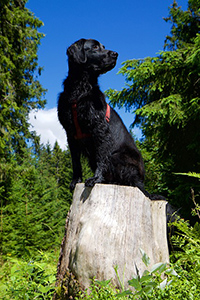
Grooming: This dog requires weekly brushing, and an occasional bath is recommended.
Activity level: The breed requires regular vigorous exercise. The dogs love to hike, swim, jog, and they are great at dog sports.
Color: Black or liver.
Coat: The coat is flat, straight, and glossy; its moderate density and fullness provide insulation from all types of weather. A longer, heavier mane on the neck and shoulders is more pronounced in males. The ears, front, chest, backs of forelegs, thighs, and underside of the tail are well feathered.
Group: Sporting
Year recognized by the AKC: 1915
Health
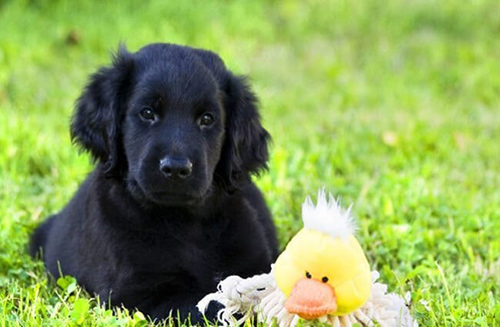
- MAJOR CONCERNS: malignant histiocytosis
- MINOR CONCERNS: CHD, glaucoma, patellar luxation, hemangiosarcoma, osteosarcoma, lymphosarcoma, gastric torsion, fibrosarcoma
- OCCASIONALLY SEEN: seizures, diabetes
- SUGGESTED TESTS: eye, hip, knee
- LIFE SPAN: 8 years
- WEIGHT: 60 to 70 pounds
- HEIGHT: Male – 23 to 24.5 inches; Female – 22 to 23.5 inches
Parent club: Flat-Coated Retriever Society of America (https://fcrsa.org/); founded in 1960.
Regional clubs: There are nine regional Flat-Coated Retriever clubs in the United States; information is listed under “Local Clubs” on the parent club’s home page.
Rescue: Flat-Coated Retriever Society of America Rescue and Referral information is located on the parent’s club’s website under “Flat-Coat Rescue.”

